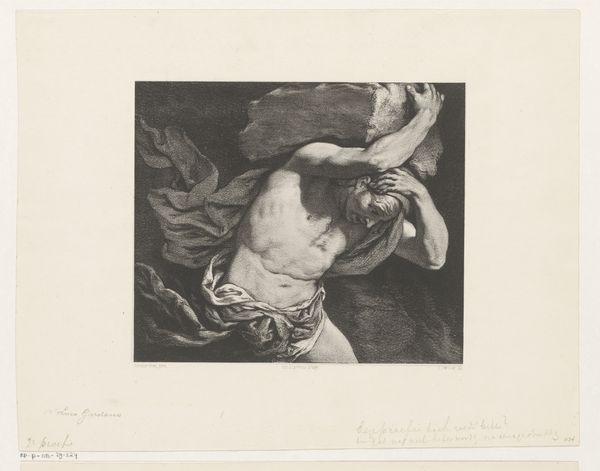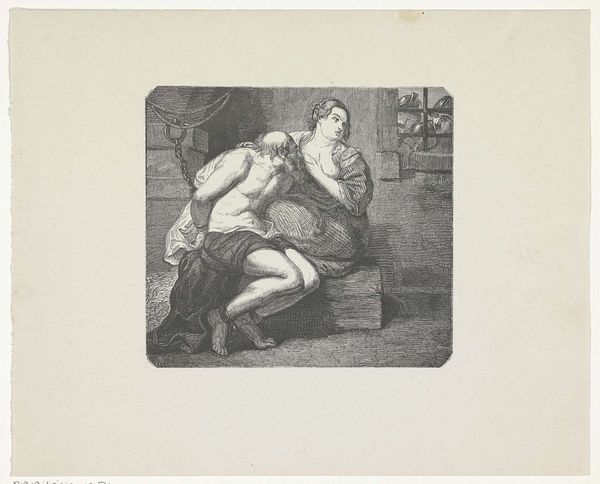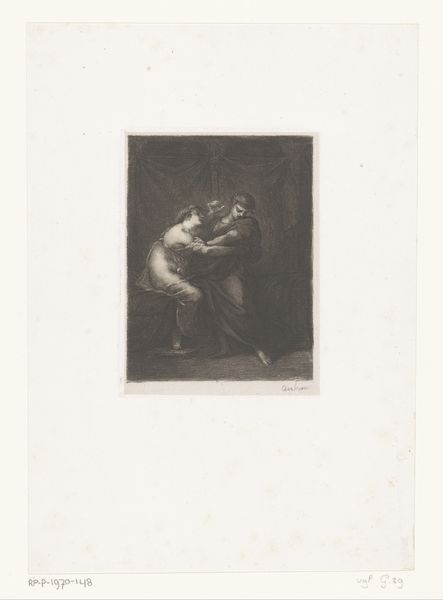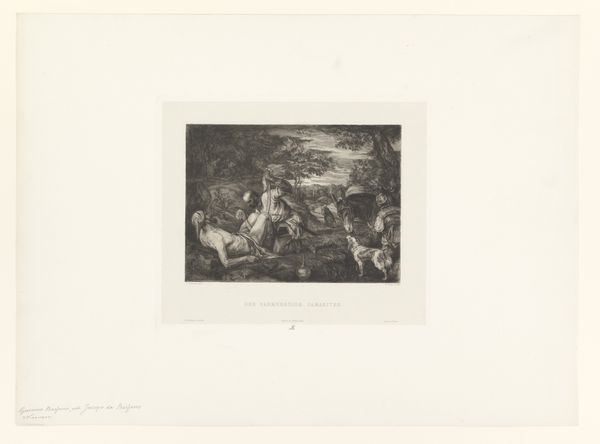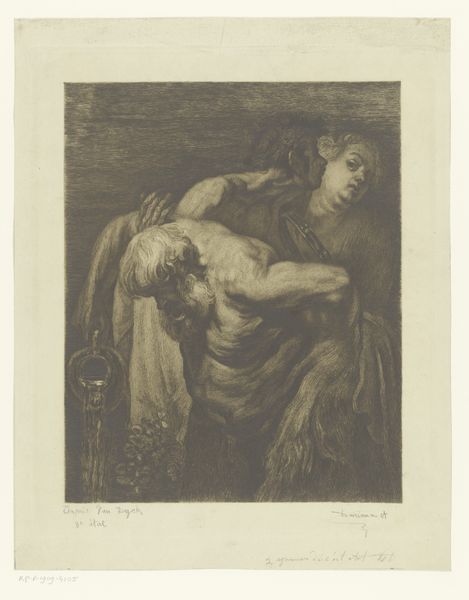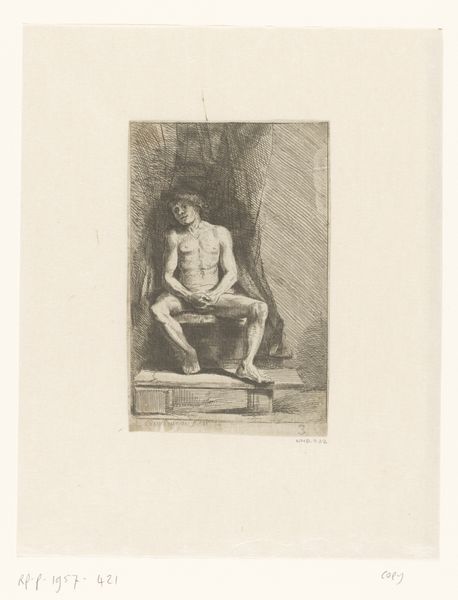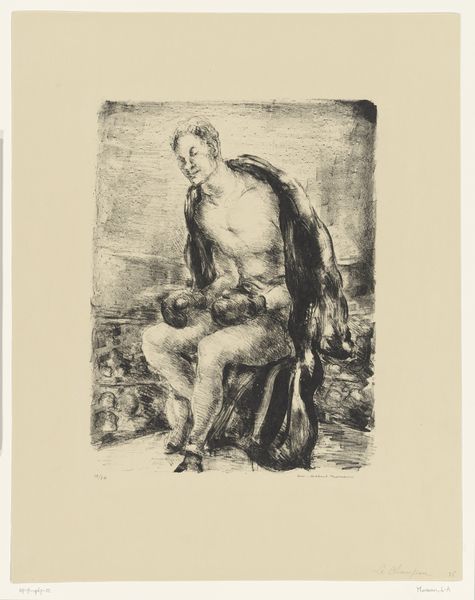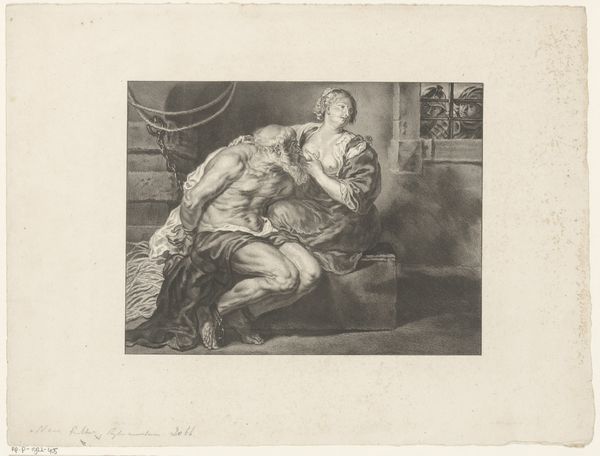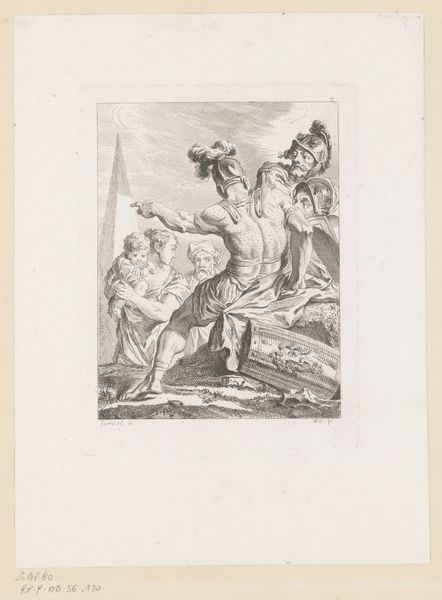
Dimensions: height 270 mm, width 347 mm
Copyright: Rijks Museum: Open Domain
Curator: This is "Roofvogel trekt de lever uit het lichaam van Prometheus," an etching made between 1867 and 1874 by Jan Mesker. Editor: Bleak. Really bleak. It's hard to look at—the grey tones just add to the sense of despair. You can almost feel his pain radiating from the print. Curator: Indeed. The medium itself, etching, involved significant physical labor—metal plate preparation, acid baths, the intense pressure of the printing press. This toil mirrors Prometheus’s own unending punishment. He was, after all, chained and tortured as retribution for giving mankind the gift of fire. Editor: It’s interesting how the image of Prometheus has been employed. Here we see him depicted not as a triumphant figure, but as one entirely subject to cruel fate, furthering a visual tradition of the late 19th century romantic period with this particular focus. What were the public displays and institutional support that enabled such artwork to thrive during this time? Curator: Well, prints like this circulated through the market differently from paintings. This would have been relatively accessible. Consider the scale and the materials: paper, ink, metal plate, the accessibility meant wider social groups had an opportunity to respond to the figure of Prometheus. The labor of producing such a multiple would therefore invite interpretations far beyond the established salons. Editor: Do you feel this specific interpretation, the suffering, plays into contemporary sentiments? Curator: Absolutely. The rise of social consciousness intertwined with new philosophies placed an emphasis on individuals battling against vast systems and the eternal repetition of human suffering. In many ways it humanises a god of Greek mythos by making Prometheus less like a supernatural being and more aligned with relatable concerns in Dutch culture during Mesker's era. Editor: Looking at the details—the fine lines capturing musculature and anguish. Curator: Consider, also, the artist’s labour in producing those lines. It really speaks to that moment of production. How much of this image really depended on its reproductive process? Editor: A truly visceral depiction—its focus on enduring hardship makes it a poignant historical and artistic statement. Curator: It makes me reconsider how we present not only heroic strength, but also the enduring struggle of creation itself.
Comments
No comments
Be the first to comment and join the conversation on the ultimate creative platform.
